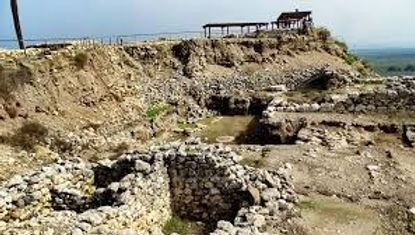Megiddo
Ever wonder where the word Armageddon comes from?

This move necessitated the development of a standing, professional army and the construction of stables with specific needs: proximity to key roads and crossroads, adequate horse feed supply, and open spaces for training charioteers. As a result, Solomon strategically built his chariot cities near valleys, including Gezer and Beit Horon near the Ayalon Valley, Hazor by the Hula Valley, and Megiddo overlooking the Jezreel Valley plains.
The Valley of Megiddo lies at a key international crossroads. Here, the ancient Via Maris, the route from Egypt, turned east and crossed the Jezreel Valley before continuing north to Syria. Additionally, the road from Phoenicia to the south intersected with the Via Maris at this crucial point. Megiddo’s strategic location made it the site of many pivotal battles throughout history, from the 15th century BCE, when Pharaoh Thutmose III defeated a coalition of Canaanite kings, to World War I, when the British achieved a decisive victory over the Turkish Empire in the same area.
The term Armageddon is derived from two words: Ar, meaning "mountain" in Hebrew, and Megiddo, referring to the ancient city. Due to its strategic significance, Megiddo became associated, particularly in Christian tradition, with the site of a final, apocalyptic battle at the end of times. Today, the term is also used more broadly to describe any catastrophic or end-of-the-world scenario.
Don’t miss out on the city of Afula and its renowned falafel. It's just a 15-minute drive to the city center, where you can enjoy some of the best falafel around.
